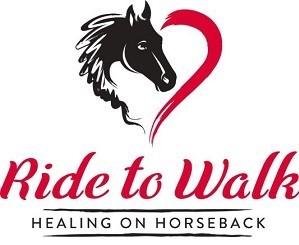
The benefits of horseback riding are as numerous as the types of disabilities and conditions served. Research shows that students who participate in therapeutic riding can experience physical, emotional and mental rewards. Because horseback riding gently and rhythmically moves the rider’s body in a manner similar to a human gait, riders with physical disabilities often show improvement in flexibility, balance and muscle strength.
For individuals with mental or emotional disabilities, the unique relationship formed with the horse can lead to increased confidence, patience and self-esteem. The sense of independence found on horseback benefits all who ride. The therapeutic qualities of horseback riding are recognized by many medical professionals, including the American Physical Therapy Association and the American Occupational Therapy Association.
Early and consistent therapeutic intervention are the keys to development of enough controlled physical movement and communications to avoid the much costlier alternative of institutionalization as children grow to adulthood. There are very limited therapeutic services available to the many children in the greater Sacramento area who are diagnosed with cerebral palsy, epilepsy, autism.
While there are a variety of programs that put disabled children on horseback for recreational purposes, Ride to Walk is currently the only program in this area that focuses on the therapeutic aspects of this activity. Children participate in weekly horseback riding therapy sessions conducted by specially trained physical and/or occupational therapists. Ride to Walk’s reputation as a successful intervention program for this population, from the severely affected to the mildly disabled, is recognized by both Alta California Regional Center and the North American Handicapped Riding Association (NAHRA).
The Medical Community Agrees
“A horse’s walking action mimics your body action. So, when you put somebody on a horse, in order to keep their balance, they have to move their trunk, arms, shoulders, head and the rest of their body. Only a live creature can make happen what is so beneficial. Nautilus and other exercise machines work only one group of muscles at a time. They don’t require you to respond to them with natural body movements. A horse makes your whole body respond in a smoothly rhythmic, progressive way.”
Dr. Louis Wagner, Retired
Chest and Vascular Surgeon, Franklin, PA
“Therapeutic riding transcends traditional therapeutic methods and provides people with the joy of participating in a program that offers social, athletic and personal rewards, while providing benefits as well.”
Robert T. Kramer, Chief, Department of Pediatrics
Baylor University Medical Center, Children’s Medical Center
Presbyterian Medical Center, Dallas, TX
